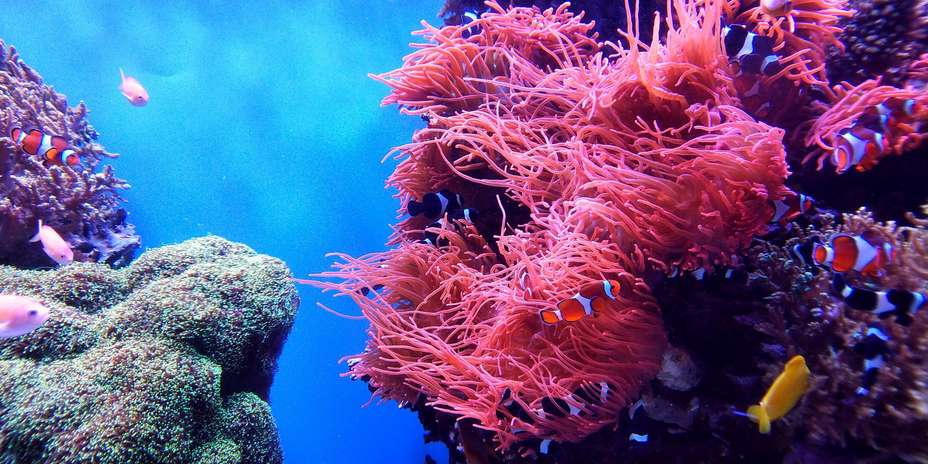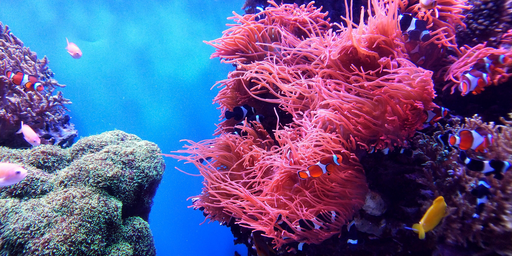The summer going into my senior year of high school, I was given the opportunity to travel to a small town in the Dominican Republic called Bayahibe to learn about and research marine life, climate change and more specifically, coral bleaching. Before this experience, I had no idea what was going on our ocean floors and how coral bleaching was affecting our marine life. This realization sparked a passion for me to learn more about coral bleaching and educate my peers about how harmful it really is.
Corals are animals that survive off their relationship with algae. Both organisms benefit from this relationship because coral gives algae shelter and nutrition, and algae is responsible for providing coral with protection, food and its vibrant colors.
There are many stressors that cause coral bleaching at a local scale, but these stressors are not enough to do a great deal of damage. The only cause of mass bleaching, when large numbers of coral colonies are bleached in a short time frame, is a change in ocean temperature, more often a rise in ocean temperature due to global warming.
When the stressors that cause coral to bleach occur, the algae that once gave coral its food and protection start becoming harmful to the coral. The coral responds to this change by expelling the algae from its surface. When all the algae are expelled, the coral is bleached and left without its main food source, its protection, and it is extremely vulnerable and likely to die.
Coral is extremely sensitive, and a shift in temperature, even one or two degrees Celsius, is enough to trigger a bleaching event. If the temperature stress does not stay for long, coral is able to recover. Unfortunately due to global warming, it is not common for ocean temperature to lower for long enough for coral to recover, resulting in a loss of coral all over the world.
Coral bleaching’s effects are extreme and it is becoming a common occurrence. A mass bleaching event occurred in 2015 and 2016 and it was the worst bleaching event that the Great Barrier Reef, the world’s largest reef system, has ever seen, killing 22% of all its coral. The severity of the bleaching varied, as some reefs were bleached less than 10% and others over 90%. This event followed a record high of ocean temperatures. Since 2009, 14% of all coral has died.
“Reefs in the Pacific are in a nosedive right now, and no one knows how bad it’s going to get,” said Kristen Marhaver, a coral reef biologist.
Coral bleaching has devastating effects on our environment. Coral reefs are often referred to as the “rainforests of the sea” due to their biodiversity. Coral reefs are responsible for providing shelter and food for over a quarter of all marine life species. When coral is bleached, many animals are left without a home, affecting ocean biodiversity.
Coral bleaching affects all of us as well. Over half a billion people rely on coral reefs for food, income, and protection. Reefs act as a barrier to harsh storms and hurricanes, often significantly decreasing the severity of storms and protecting coastal cities. When coral dies, these communities are more likely to experience damaging storms. Many of these coastal cities also rely on coral reefs for their fishing and tourism economy. Annually, 375 billion dollars is lost as a direct result of coral bleaching. I saw this effect firsthand in Bayahibe, the small coastal town I visited that relies on tourism as its main source of income. In recent years, Bayahibe has seen a decline of tourists due to coral bleaching. No tourist wants to pay money to see dead coral, would you?
I know these statistics are overwhelming and it is easy to lose hope but there are efforts to reduce the effects of coral bleaching. Fundemar is an organization in the Dominican Republic that I worked with on my trip to the Dominican Republic. They study coral reefs and are finding new technology to protect them. They are currently working to grow the coral population by asexually reproducing coral and giving them the space they need to grow before putting them in the ocean. There is also new technology being invented that surrounds coral, protecting it from stressors.
There are also things we can do to help in our day to day lives! Global warming is the largest contributor to coral bleaching, so combating climate change is a small step to helping our coral reefs. You can do this by choosing to walk instead of drive, eating fewer red meats and voting. Voting is a significant way to get involved and help combat coral bleaching, reaching out to your representatives and telling them you are passionate about this issue is a great way to push for policy change.
We need coral and so does our marine life! Coral bleaching is an intimidating and vast issue, but do not lose hope. There are still things we can do and educating yourself and others is the first step on this journey.


